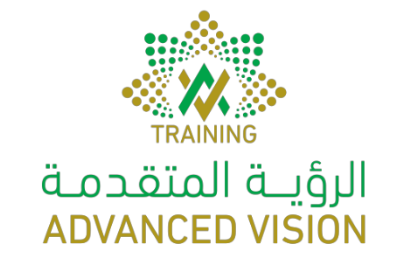- You will be able to learn more about Oracle Database infrastructure
- You will be considered an Oracle Certified Database Professional
- This certification will validate your ability to design, develop, and deploy database-driven applications for the organization
- You will get more job opportunities with the help of this certification
- With this certificate, you will be able to earn more by serving the organization as a certified database developer professional
Declaring PL/SQL Variables
- Recognize valid and invalid identifiers
- List the uses of variables, declare and initialize variables, use bind variables
- List and describe various data types using the %TYPE and %ROWTYPE attributes
Writing Executable Statements
- Identify lexical units in a PL/SQL block
- Use built-in SQL functions in PL/SQL and sequences in PL/SQL expressions
- Describe when implicit conversions take place and when explicit conversions have to be dealt with
- Write nested blocks and qualify variables with labels
- Write readable code with appropriate indentation
Writing SQL in PL/SQL
- Create PL/SQL executable blocks using DML and transaction control statements
- Make use of the INTO clause to hold the values returned by an SQL statement
Writing Control Structures
- Identify the uses and types of control structures (IF, CASE statements and expressions)
- Construct and identify loop statements
- Use EXIT and CONTINUE statements inside loops
Working with Composite Data Types
- Create user-defined PL/SQL records
- Create a record with the %ROWTYPE attribute
- Create an INDEX BY table and INDEX BY table of records
- Describe the differences among records, collections, and collections of records
- Initialize collections and records
Using Explicit Cursors
- Distinguish between implicit and explicit cursors and use SQL cursor attributes
- Declare and control explicit cursors, use simple loops and cursor FOR loops to fetch data
- Declare and use cursors with parameters
- Lock rows with the FOR-UPDATE clause and reference the current row with the WHERE CURRENT OF clause
Handling Exceptions
- Define PL/SQL exceptions
- Recognize unhandled exceptions
- Handle different types of exceptions (internally defined exceptions, predefined exceptions and user-defined exceptions)
- Propagate exceptions
Using PL/SQL Subprograms
- Differentiate between anonymous blocks and subprograms
- Create a simple procedure and invoke it from an anonymous block
- Identify the benefits of subprograms
Creating Procedures and Using Parameters
- Create a procedure with parameters
- Use named notation
- Work with procedures (create, invoke and remove procedures)
- Handle exceptions in procedures and display a procedure's information
Creating Functions
- Differentiate between a procedure and a function
- Describe the uses of functions
- Work with functions (create, invoke and remove functions)
Creating Packages
- Identify the benefits and the components of packages
- Work with packages (create package specification and body, invoke package subprograms, remove a package and display package information)
- Overload package subprograms and use forward declarations
Working with Packages
- Use package types and variables
- Use packaged constants and functions in SQL
- Use ACCESSIBLE BY to restrict access to package subprograms
Using Dynamic SQL
- Describe the execution flow of SQL statements
- Use Native Dynamic SQL (NDS)
- Bind PL/SQL types in SQL statements
Design Considerations for PL/SQL Code
- Create standard constants and exceptions
- Write and call local subprograms
- Control the run-time privileges of a subprogram
- Perform autonomous transactions
- Use NOCOPY hint, PARALLEL ENABLE hint and DETERMINISTIC clause
- Use bulk binding and the RETURNING clause with DML
Creating Compound, DDL, and Event Database Triggers
- Create triggers on DDL statements
- Create triggers on system events
- Describe different types of triggers and their uses
Using the PL/SQL Compiler
- Describe the PL/SQL compiler and features
- Use the PL/SQL compiler initialization parameters
- Use the PL/SQL compile-time warnings
Managing PL/SQL Code
- Describe and use conditional compilation
- Code-based access control: granting roles to program units
- Whitelist code access with the ACCESSIBLE BY clause
- Mark code as deprecated
Managing Dependencies
- Track and manage procedural dependencies
Oracle PL SQL Developer Certified Associate is a professional certificate that validates your knowledge of the PL SQL language, its features, architecture, interactions with the SQL engine, programming constructs, and data types. This course trains you to understand complex datatypes, external procedures, dynamic cursors, security features, and considerations.
Gaining the credentials helps you bag a high-earning job and a respectable position in your organization. This course from Vinsys elaborates a comprehensive approach to learning the concepts and encourages practical implementation of the learned knowledge.
This certification is intended for:
- Database Administrators
- PL/SQL Developers
- System Analysts
- Forms Developers
- Technical Consultants
There is no pre-requisite for this course. The Oracle PL/SQL Developer Certified – Associate training is an entry-level certificate for aspirants who wish to pursue a rewarding career in Oracle
This training enables you to understand the basics of PL SQL and lets you shape a bright career in the domain. Oracle is the most popularly demanded software globally and when you certify as an Oracle PL SQL Develop Associate, you are sure to grab amazing opportunities in the industry.
As an Oracle Database PL/SQL Developer Certified Professional, you have a variety of career paths and opportunities available. You can work as a PL/SQL developer, coordinating with Database Administrators (DBAs) to create and maintain tables, privileges, and indexes
- Exam Name: Oracle Database Program with PL/SQL
- Exam Code: 1Z0-149
- Duration: 90 minutes
- Number of Questions: 65
- Passing Score: 66%
- Format: Multiple Choice Questions (MCQ)
- After the exam, your exam score will display on-screen at the close of your exam. You will also receive an email indicating whether you passed or failed. You can view your exam results and full score report in Oracle CertView.










